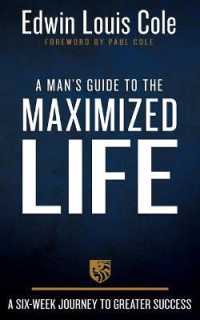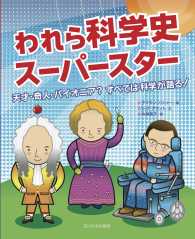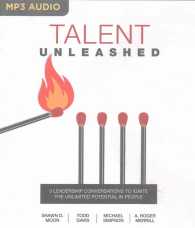Full Description
Artificial intelligence (AI) is transforming the world around us and education is no exception. But how can AI help in the primary classroom, particularly with teaching reading, writing and comprehension? This practical guide demystifies AI for teachers, offering clear, accessible and practical strategies to enhance literacy teaching in a way that is both effective and engaging.
Written specifically for primary school teachers, this book explores how AI-powered tools can support children's literacy development. It provides step-by-step guidance on using AI to enrich reading activities, improve comprehension skills, inspire creative writing, make poetry analysis and writing easier, and make non-fiction research more engaging. The book is packed with real-world, tried and tested examples with easy-to-follow lesson ideas, and thoughtful discussion points to help teachers integrate AI into their teaching while maintaining the human connection that is central to learning.
This practical resource is for anyone looking for innovative ways to engage young learners with their reading and writing. It is particularly relevant for teachers and school leaders and offers hands-on support on how to use AI ethically and effectively in the classroom, whilst also suggesting ways to enhance learning and pupil engagement within an ever-evolving educational landscape.
Contents
PART 1 - Reading
Chapter 1 - Personalised Texts and Reading Lists
Chapter 2 - Speech-to-Text
Chapter 3 - Phonics
Chapter 4 - Interactive Storytelling
Chapter 5 - Reading Fluency
Chapter 6 - Virtual Reading Buddies
Chapter 7 - Reading Games
Chapter 8 - Audiobooks
Chapter 9 - Simplifying and Extending Texts
Chapter 10 - Summarising Texts
PART 2 - Comprehension Skills
Chapter 11 - Quizzes
Chapter 12 - Key Moments
Chapter 13 - Vocabulary Expansion and Building
Chapter 14 - Emotion Analysis
Chapter 15 - Book Discussions
Chapter 16 - Reading Aloud to Avatars
Chapter 17 - Reading Challenges
Chapter 18 - Flashcards
Chapter 19 - Guess the Ending
Chapter 20 - Clarify the Confusion
PART 3 - Character Descriptions
Chapter 21 - Checking Book Character Descriptions
Chapter 22 - Character Analysis
Chapter 23 - Context of Characters
Chapter 24 - Appearance and Personality
Chapter 25 - Revealing Character Through Actions
Chapter 26 - Character Development
Chapter 27 - Sentence Starters
Chapter 28 - Opposites and Comparisons
Chapter 29 - Emotive Language
Chapter 30 - Dialogue
PART 4 - Setting Descriptions
Chapter 31 - Example Texts
Chapter 32 - Change the Timeline
Chapter 33 - Adding Sensory Detail
Chapter 34 - Developmental Prompts
Chapter 35 - Weather and Other Influences
Chapter 36 - Colour and Tone
Chapter 37 - Feedback on Descriptions
Chapter 38 - Movement
Chapter 39 - Other Worlds
Chapter 40 - Contrasting Places
PART 4 - Poetry
Chapter 41 - Explaining Literary Devices
Chapter 42 - More Figurative Language
Chapter 43 - Writing Ballads
Chapter 44 - Structured Poetry
Chapter 45 - Free Verse
Chapter 46 - Poetry Prompts
Chapter 47 - Rhyme
Chapter 48 - Thematic Ideas
Chapter 49 - Collaborative Ideas
Chapter 50 - Poetry Analysis
PART 5 - Non-Fiction
Chapter 51 - Structure
Chapter 52 - Research
Chapter 53 - Captions and Headings
Chapter 54 - Lesson Planning
Chapter 55 - Topic Related Vocabulary
Chapter 56 - Fact vs Opinion
Chapter 57 - Summarising
Chapter 58 - Explaining Features
Chapter 59 - Creating Narrative Non-Fiction
Chapter 60 - Writing Conclusions







